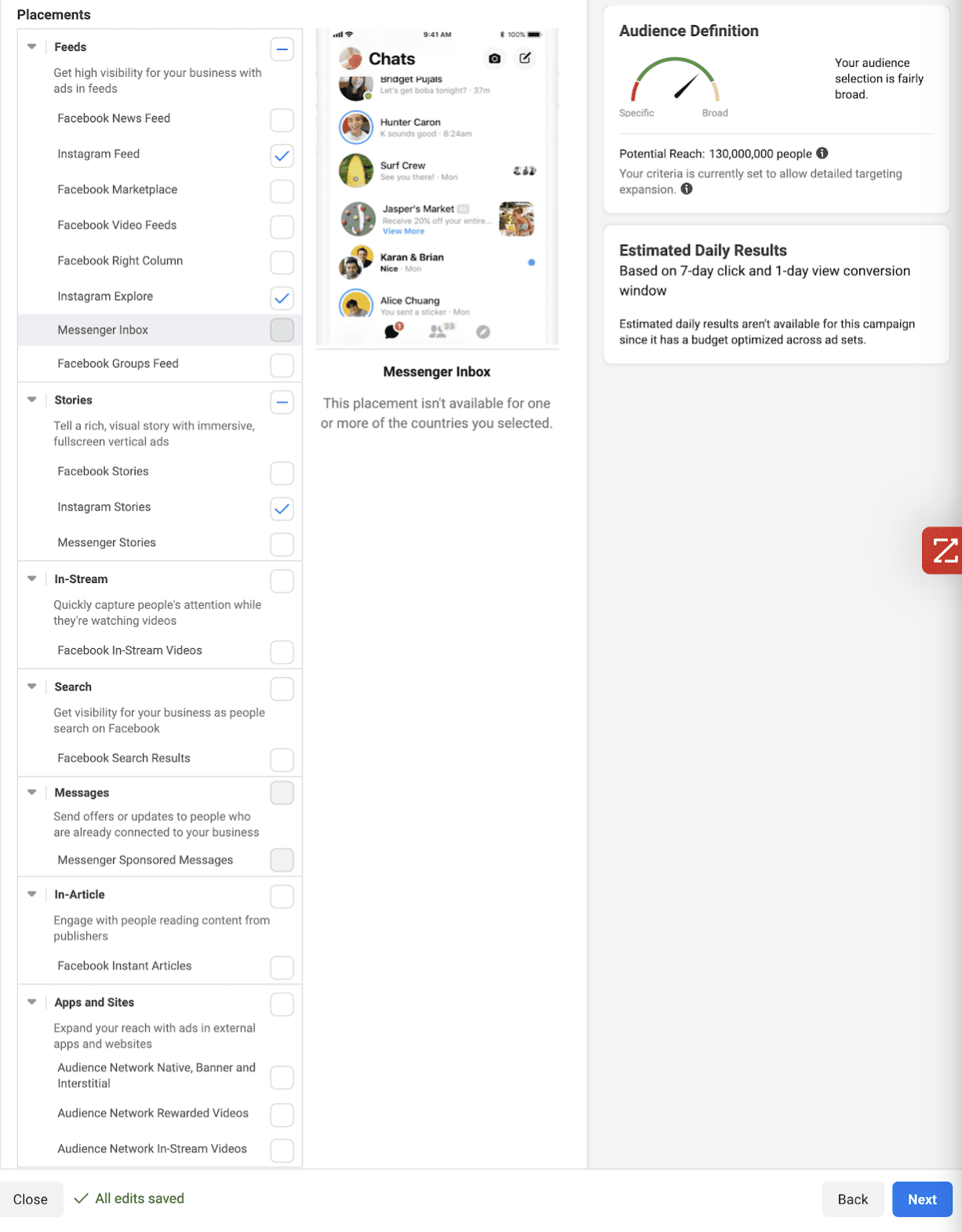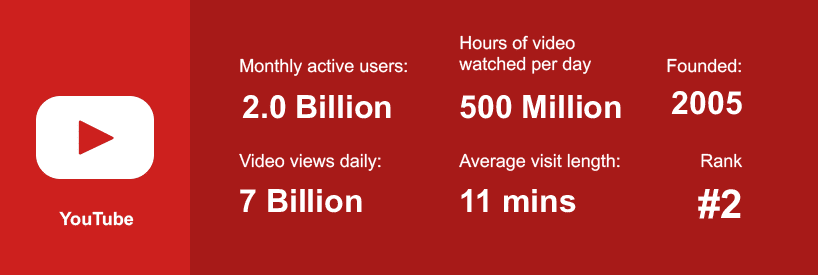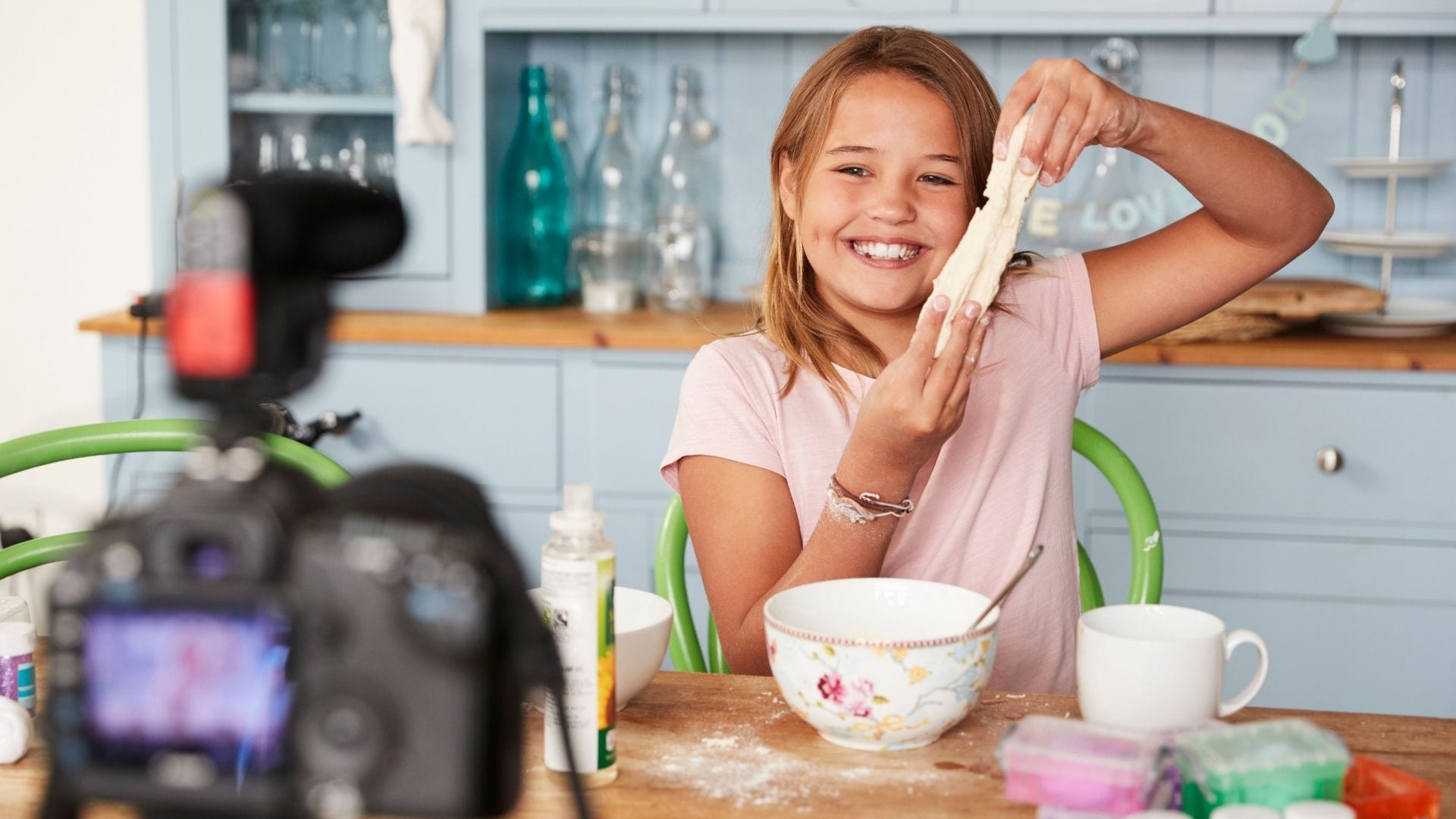Resources
In this article we continue our Social Media Advertising How-To guides. So…Instagram here we come.
Here are some of the good and bad of Instagram.
Pros
Cons
Let’s get into the nuts and bolts of Instagram Advertising so you can start using this for expanding your brand.
Value Proposition
Before you start any advertising campaign you should understand the value proposition. This can be for the overall company, it can be for a particular service or product.
Regardless you should know how to communicate the value your company, service or product is going to give the audience you are advertising to.
Launching an Instagram Ad Campaign
You can run ads directly through the Instagram platform, but we highly recommend that you use the Facebook Ads manager to run your Instagram ads.
This will give your business more targeting, monitoring & demographic tools than you would give just from the Instagram platform.
To do this you will need to link your Instagram account to your Facebook account. Use this link to help if needed.
Now head over to the Facebook Ads Manager. Once there hit the create button. It is green and can be found in the top left corner.
You will see the following:

Now you need to choose which campaign objective you want to have for your advertising.
There are a lot of options here. Ensure that you pick the right based on the goals of the overall marketing campaign you are working on.
It will take you to the next page that looks like this:

From here you can name the Campaign by double clicking into that field. The next section for “Special Ad Categories”. Look at what this says and if you fall under these categories ensure that you turn this on. Otherwise your advertisement will not get approved.
“Campaign Details”. Auction is how all paid advertising you will be doing is going to be run, and there is no other option for you to pick.
“Campaign Objective”. You can change your mind here from what you picked from the beginning, but you most likely won’t.
A/B Testing – I highly recommend that you push the get started button. A/B testing is one of the best ways to continuously improve an advertising campaign.
Campaign Budget Optimization – This option will allow you to pick between a daily or lifetime budget. If you have a specific budget that is only going to be for a specific amount of time then choose “Lifetime Budget”. If you are going to have an on-going campaign choose “Daily Budget”.
“Campaign Bid Strategy”. This is an option you can choose. It has the following Options:
Lower Cost – Get the most results for your budget
Cost Cap – Control costs while getting the most volume of results
Bid Cap – Control your bid in each auction
Minimum ROAS (Return on As Spend) – Control you ROAS while for best value
Target Cost – Get a consistent cost per result
When first starting out in advertising we recommend always using “Lower Cost” for an ongoing campaign. Meaning when you have chosen the daily amount. When doing a lifetime budget we recommend using Cost Cap.
Once you have determined how to run your campaign budget, hit the blue button on the bottom right to go to the next page.
This will take you to the Ads Set page and it will look like the following:

If you have a question about what ad sets are, press the link to get an explanation. Double click in the ad set name field to change it to what you want.
Conversions – You are going to choose where your conversions are going. Website, Aps, Messenger or WhatsApp.
Facebook Pixel. You should have this for all your campaigns. Use this link for instructions on how to set it up.
“Conversion Event”. When you set up your Facebook Pixel it will have specific events to choose from. Hit the drop down and you can choose and one of the events you set up.
Dynamic Creative – I personally don’t use the option, but if you are short for time, this might be helpful.
Offer – If you are trying to sell something specific online you should absolutely use this tool from Facebook.

As you can see from the picture above it gives you a lot of options to use. Check it one and use those that are applicable.
Budget Schedule – Here you can choose when you ad starts and ends. This will be mainly for the “Lifetime Budget”.
Now you will pick your audience based on the customer personas you should already have if you are doing a marketing campaign.
Placements – For Instagram advertising you want to hit the manual option. It will open the following:

Pick instagram and then choose what instagram you want your advertisement to show in.
From here just hit the next button and go to the next page and see the following:

You can name the ad in the “ad name field”. If you have multiple pages it will ask you to pick the page it is associated with.
Ad Set Up – You can create a complete new ad, use an existing post or creative hub mockup (Facebook will help you put together an ad). As a marketer I do not use this feature, but it might be helpful for those who need it.
Pick between single image or video, carousel or collection. We recommend you use single image or video the most. Trying to overwhelm an audience with too many images will have a negative impact.
Ad Creative – This is where you will place your image or video. Type in your copy. You will put the destination (website or Facebook event) and put a CTA button. You can pick language and since you set up your Facebook pixel this is how it will be tracked.
Here are some tips on Ad Creatives
A/B Testing
Always make more than one ad. Then test each against each other. Use two week increments to determine the outcome. Scrap the one that performs the worst. Then create another ad to challenge the best performing ad. Continue until you have optimal ad performance.
Monitoring Analytics
Facebook Ads Manager comes equipped with very in-depth analytics. Use this to track your campaigns and really understand how well your campaign is doing.
Check it every week and compare your ads. Fix accordingly. Play with the audiences and CTAs to work on increasing conversions.
This takes time and isn’t a 1 hour a week thing. You need to devote hours each week to ensuring your marketing campaigns are making progress.
If needed hire an internal staff member or agency to assist.
I hope you found this article helpful. Follow us on social media or subscribe to our blog to continue to get help tips.
This week we are starting a series on who to actually use each platform to enhance a company’s digital marketing strategy.
Over the last few weeks we released a series of blogs regarding each social media platform and how they can assist small and local businesses.
We are going to start this series off with Facebook – The biggest and baddest of them all. This is a bit long but bear with me, I believe you will greatly benefit what I’m about to discuss!
What are the reasons why Facebook is good for digital advertising:
The Amount of Users – Welcome to the home of 2.6 billion users. This is over a 3rd of the entire population on earth. As a marketing if that doesn’t get you excited…nothing will.
General Cost Per Lead – The destiny of your digital advertising on Facebook is completely up to you. Spend as little or as much as you want. But the average CPL of $1.72…should keep you using this platform for a very long time to come.
Targeting & Retargeting – The segmentation level of Facebook has no peers. Bar none the best you can get outside of Google. Then the ways you can remarket to those same people is ridiculous.
It is also extremely easy to use and the analytics are legit.
So let’s dive into how we can start using Facebook advertising.
Launching a Facebook ad campaign
It is going to start out with your company’s or products value add proposition. What is your company or the product you are advertising going to do that sets it apart from the competition.
For some companies this is very clear and simple to understand. For others it might not be that simple. Here are some steps you can take to work this out:
Some of you might be wondering why this is the first step. Understanding what you are advertising and how this will improve your clients or consumers is a must before even starting to advertise.
Determine your Audience
This is where you will learn how in depth Facebook can know your audience. Facebook has something called Facebook Audience Insights.
This is a tool that anyone on Facebook can use in the Facebook Ads Manager.
There are a couple ways this tool can be used to determine your audience on Facebook.
If you already have an exact understanding of who your target audience is then you can use this tool to narrow down to market to only those types of people.
If you don’t know exactly who your target audience is, this tool is very helpful to understand people with similar interests to help you determine who would be the best audience to send your marketing to.
When you open up Facebook Audience Insights it will ask you if you want information about the people already following your page or if you want to extract information from the entirety of all Facebook users.
When you pick people connected to your page it will request that you input your page into their program. You will also be able to input other pages similar to yours or that you think would be interested in your product or services.
From here you can start narrowing down your target. You can pick geographically where you want to concentrate. Nationwide, state, city, county, etc.
You can then determine the age group you want to target. You can determine if you want everyone or pick between male and female.
Here is where you can really start to narrow down the audience. The next category is interests. Facebook has hundreds of interests already picked out and you can use these or you can type in keywords and many of these will already be in the system and you can use these to narrow your target down.
You can then widdle it down even further with language, relationship status, education, work, market segments, parents, politics and life events.
All this will happen along the left hand side of the screen. While you are refining your audience on the right side of your screen Facebook will populate statistically information.
Percentage of Men compared to Women, Relationship status, education level, the percentages of job titles held by all these people or their work, etc.
There will be another tag called Page Likes. Facebook will break the top categories based on the demographics you picked. It will also give you location and device information. It is very, very detailed.
When you have fully determined who your audience is, you can then save that audience to use for any future campaigns that will be applicable.

Setting Up Tracking with Google Tag Manager and Facebook Ads Manager
Regardless of what you do in business, it needs to be effective. How does any business track effectiveness. Statistics or analytics. The same applies to any marketing campaign that you run.
There are a few things that a business needs to do to ensure they properly track the campaigns they are running.
The first thing you need to do is ensure that you have a Google Tag Manager. Once you this set up work your way to the website container and hit the “Add Tag” button. You will want to ensure you pick “custom html” and add a name for your tag.
Now open up Facebook Business Manager and head to the Events Manager. Then select “add event”. You will be given an option and ensure you select “install code manually”. You want to ensure that you get the entire code so select the option “copy code”.
Make you way back to Google Tag Manager and insert this code into the HTML container. Go to advanced settings dropdown and pick “Once per page” that you will find under “Tag firing options”. Then under “Fire on” pick “all pages”. Then hit the create tag button and you are all set.
If you have any problems with this, use this link – Facebook Tag Help
Call to Action & Conversion Goals
Now that you have set up the tracking as covered above, we will need to determine what is being tracked.
Based on the marketing strategy you are executing, your call to actions (CTAs) and goals will be different.
Most people assume that marketing = leads. While this is true, marketing is responsible for so much more.
A business could be running a branding campaign and they are not looking for leads, but they are working on exposure.
How a company tracks the analytics will be determined by the CTAs and goals.
There are many different CTAs that can be done with Facebook. When creating an ad on Facebook there are many different campaign objectives
Are you going to send them to a landing page? Fill out a form on Facebook, etc. You need to know what you are working for.
This is the first thing you will be asked for by Facebook when creating an Ad. So ensure that you have this worked out beforehand.
Setting Up the Advertisement
After picking the objective for your campaign Facebook, it will take you New campaign set up page.
There is a place to name the campaign. Just click inside and rename what you want it to be.
It asks if this is a “Special Ad Category”. If your ad has anything to do with Credit, employment, housing, social issues, elections or politics then you will need to turn this on. Facebook will reject it otherwise.
The next section will be for A/B testing. I highly recommend that you do A/B testing and continue to do A/B testing for every single ad campaign you run. So create two ads when setting this up.
There will be a button to press to activate this. Make sure that you do.
The next section is called “Campaign Budget Optimization”. This is a bit of an advanced feature. If you are running multiple ad sets within a single campaign and don’t want to individually set up each budget and watch each budget, you can set up a daily spend budget and let Facebook decide where to spend the most money based on performance. I recommend this when you get to this level of advertising.
Now hit the next button on the bottom right of the page to move onto the next part of setting up your advertisement.
Ad Set Page
The next page is called the Ad Set Page. There are a couple of important aspects of this page you need to pay attention to.
First section of this is for “Conversion Location”. It will ask you:
Website
App
Messenger
Whats App
You will need to pick where you are trying to get your conversions from. Most will be done on this website.
The next section is “Dynamic Creative”. This is a tool that Facebook offers where you can add images and they will put together an ad for use based on the demographics you picked in the beginning for what they feel will work the best.
Sometimes this works great and sometimes it totally misses the mark. Based on what you see you will have to determine if this works for your Facebook ad. Turn it on and follow the instructions. If you don’t like what you see you can also go back and turn this off and make your own.
Now we get to “Create Offer”. This will allow you to create an offer that people can save and get reminders about. This helps drive conversions if you have a specific product or service or special, etc.
I highly recommend this option. Click this feature on. It will open up a popup window. Fill out all the information for the offer. You can make it online only or in-store. You can add a promo code. There are a lot of options for this.
Now we get to the budget. You can set a daily budget or a lifetime budget. Make sure you understand the budget amount you have to work with.
If this is going to be an ongoing campaign that is not going to stop, then choose the daily budget. Facebook will ensure that your advertising does not exceed this budget daily and you can ensure to stay within your monthly budget range.
If this is a set budget for a specific event, special, etc and you only have an exact number to spend and after there will be no more advertising the lifetime budget is the option you should choose.
Now you can schedule out exactly what day you would like to start the advertising. So, if you have a very organized marketing department they can have ads planned out well in advance. Makes life a bit easier. If needed you can select an end date as well.
The next is where you can determine the audience. If you already save an audience from earlier, you can just pick that. If not determine it here.
The next section is “Placements”. You can have automatic placements where Facebook decides the best place to put the ad, or manual placement where you decide exactly where you want the ad to go.
Unless you have a very, very specific group or place you want the ad to go, I would do the automatic placements done by Facebook.
Once this is done, go and hit the next button on the bottom right hand corner to move onto the next page.
Ad Creation
Create the name of the ad. Just click inside the box to update the name. You can select posting it to instagram as well if you have a connected account.
The “Ad Set Up” section. Pick Single Image or Video, Carousel or Collection. Videos are by far the most viewed media on any social media platform. So if you have video, USE IT. If not I would recommend having a single image. You will not have a lot of time to get people’s attention so don’t try and overwhelm them.
That being said you can use an option called Instant Experience. This will open up a pop up and allow you to give an eye catching image and text. Then put multiple products that you are selling with buttons to take them directly to pages connected to that product. I would only suggest this to those companies that have e-commerce with a lot of products.
The next section is called “Ad Creative”. Here are some tips that you can use.
Images
1. If you have the single graphic, ensure that you use text as well if your goal is conversion based.
2. If you have an education type post such as a blog, not having text is ok.
3. Whenever possible use real people in your visuals. This creates a more personal relationship with your audience.
4. The visual needs to stand out. You do not want to look like every other ad on Facebook. Be original.
Videos
1. Short. Don’t use long drawn out videos. Facebook suggests 15 seconds if you want people to watch the entire video.
2. Over 85% of people will not have their sound on when scrolling through Facebook. Ensure you have captions for the video. Facebook can provide these for you.
3. Real People. Just like the images, in your videos as much as possible use real people.
Earlier I mentioned A/B testing. I highly suggest that you use this. So you will want to ensure to create two ads that are slightly different in images and copy. This will be important in tracking the effectiveness of your campaign as time goes on.
Campaign Analytics and Testing
Once you have started the campaign you will want to see which of the two ads you create performed the best. Scrap the one with the worst performance and create a new ad to compete against the best performing ad. Keep doing this through the life of your campaign until you get optimal results.
If necessary, play with your audience to see if you get better results with a different type of audience. You might be surprised by what happens.
Once you have an ad that is performing very well, increase the budget to get even more results. But continue to watch this. If it drops then pull back on the budget and get back to A/B testing.
As part of your A/B testing ensure you are playing with the CTAs. Change it up a bit between the ads to ensure you are always working on having the best CTAs.
Ending
Facebook can be extremely lucrative. It can also waste a lot of money if you just randomly throw money at it. That is why you are always playing with the ads and forwarding the top performing ads and scraping the ones that are converting.
To make it worse, Facebook changes its algorithm all the time. So what was working could suddenly stop working and you need to move fast to avoid losing money.
A lot of local or small business owners don’t have the bandwidth to work on Social media advertising continuously and therefore just throw money at it. As this isn’t effective a lot of businesses feel that social media doesn’t work for businesses.
Either they should hire a marketing person directly within the company or hire a marketing company that has success in working with Social Media.
I hope you found this article helpful. Go ahead and follow any of our social media accounts or subscribe to our blog to continue to get great articles such as this.

I hope you found this article helpful. Go ahead and follow any of our social media accounts or subscribe to our blog to continue to get great articles such as this.
Can Twitter be used by Local and Small businesses to gain new opportunities and bring in new business?
Let’s discuss this.
Of the 5 major social media platforms businesses can use…Twitter is the smallest. There are only 48.3 million people that use Twitter in the United States. It is only about 15% of the population.
That being said…Twitter still has its uses. You will need to understand your target audience and if they use such accounts. At the end of the day, Google will still reward you for having an account and posting to it.
Twitter is a bit different from other social media platforms…but not really. Let me explain. They give you a couple of options. The Top post feed or the Latest post feed.
The latest post feed show’s people the posts from their followers and the Top post feed uses the algorithm to give you what it thinks you want to see.
Twitter is a social networking application. The idea behind any of these applications is to create an environment in which people can visit to interact with other people that are not right in front of you.
This interaction can be on many different levels…but all of them emotional. A post is going to make you cry, laugh, get angry, want to throw your phone, etc. This type of engagement is what makes any and all social networking applications work. Twitter is no different.
The signals they use for their algorithm are:
Recency
Relevance
Engagement
Rich Media
As you can see from our previous articles each of these algorithms work on many of the same principles. I wouldn’t be surprised if the developers swap code to get each of these applications working. It might be a sacreligious statement, but most likely true.

That being said, let’s break these down further.
Recency – Pretty cut and dry. From the point a user opens the application, how long ago did the post happen. The closer to the time the higher it will show in the feed.
Relevance – This is based on the words in the tweet (keywords). It will gage those words based on similar type words a user has engaged with previously.
Engagement – As far as engagement is concerned on Twitter you will be looking at retweets, clicks, impressions and favorites a tweet actually gets.
All of this will be compared to other tweets the users has engaged with in the past.
Rich Media – This is based on the type of media used in the tweet (polls, video, gifs and pictures. Also how much a user engages with each type of media.
Honorable mentions go to the amount of twitter followers an account has and the location of the account.
We’ll be honest. Twitter is our least favorite social application. It has just enough users to get traction with some demographics in the society that people still post on it, but not enough to give your full attention.
To use this application for business marketing you will need to know your target audience very well. If they fit the demographics of Twitter, by all means use it to generate business.
We would not recommend putting all your eggs in this one basket. I would make content for the other applications and just throw it up on twitter and watch the analytics and see what bites.
Then start A/B testing similar content within Twitter until you have consistent interaction.
I hope this article was helpful. Follow us on any of our social media accounts or subscribe to our blog to continue to get articles such as this one.
When you think about social media you probably don’t think of Google My Business (GMB for short). It isn’t an application like Facebook, Instagram, Twitter or LinkedIn, but you can and should make consistent posts to your GMB page, just like any of the conventional social media applications.
Google My Business is essential for any company. Local or otherwise. The Google search engine algorithm takes into account the GMB page when determining organic rankings.
90% of all local search traffic is done by Google and your GMB page gets the vast majority of that traffic.
What does GMB have to do with Social Media? You might or might know about this, but many of the features you have with your Social Media apps can also occur on GMB.
You can post to your GMB to share blogs, new products, specials or deals, etc. Anything you want can be shared on GMB.
In addition there are many ways for your target audience to communicate with your business with GMB.
Any person on the internet can ask your business questions directly from your GMB page.
Your business also has the ability to set up direct text with GMB. A person can write out a text directly from within GMB and it will go directly to the phone number connected to the account (there are also options so you don’t have to use your personal phone number).
You can add business descriptions, photos, 30 second videos, services, reviews, what payment methods you expect, etc. There is nothing that a Social Media page does that GMB can’t do and in most cases do it better.
Most people don’t consider it a social media application because there isn’t a seperate app for it. What people don’t realize is that Google doesn’t need another app…it is the biggest app on the planet. Actually all social media apps work through Google.
Like all other social media applications GMB works off specific signals. These are:
Again…Google makes money not from the end user, but from everyone advertising on the platform. It is a good thing that Google has the most captive audience in the world.
Relevance – Relevance on your GMB page based on keywords. People are going to be searching through the search engine and if your GMB has matching keywords you have the ability to show up.
Distance – Every search done on Google generally uses locational services. If it is done on a desktop Google uses the IP to track the user and when done on a cell phone it uses the GPS built into the phone. Google will then give answers based on relative distance from the users based on the keywords typed.
If a business that is farther away, but is more relevant based on keywords, it will most likely rank higher.
Prominence – This covers how well a business is known. Digitally and offline, at least that is what Google says.

Digitally Google is going to cross check the business across the internet, look for links, articles and NAP citations, review count and review score and lastly your overall organic ranking.
For any business that is local a GMB page is an absolute must have. It is essential for every business and we recommend every single business have one and post to it just as regularly as you would your social media accounts.
At the end of the day, even if it does not bring in direct leads it will help your organic search engine optimization and this is a concern for every business.
We hope you found this article helpful. Make sure you follow any of our social media accounts or subscribe to our newsletter so you don’t miss out on any of our articles.
YouTube – The second biggest search engine in the world. They have 2 billion users log-in every single month.
There are 500 hours of video uploaded every minute of every single day.
In the US alone, YouTube will make 5.5 billion dollars in advertising revenue.
73% of Adults in the US watch YouTube.
62% of businesses use YouTube to post video content.
If you are not using YouTube…then you are missing out. Big Time.
In 2020 video is the most consumed content on the planet. Based on studies the average human attention span is 4.4 seconds.
Most humans could read two sentences in the time and the fast ones a full paragraph. A human can capture with detail 2 photos at the most in that same time span.
75% of people state they retain information when watching video ads over text or picture ads.
Video is the content of choice and YouTube is the best place to get it. Period.

By this time in our Basics of Social Media series you should have seen a pattern. All social media is based on getting and keeping users engaged.
25 years ago marketing was all about getting people into physical locations for salesmen or saleswomen to close them or at least on the phone. The only avenues of marketing were TV, Radio, Print and Word of Mouth (and word of mouth was only the people that person could talk to).
This is no longer the case. The amount of mediums used to market today is scary. Just think about yourself for a second.
If you have email, Facebook, Instagram, LinkedIn, Twitter, Tik Tok, internet, personal & business mail, etc…every single day you will receive marketing on each one of those channels.
You might possibly understand why the attention span is so small. Every second of every day marketers are fighting for the attention of that potential client.
Social media platforms have been learning this over the last 5 years and every single platform has moved into engaging audiences with content they want to see and they don’t care what brands want them to see.
This bears out when looking at how YouTube uses their algorithms. The signals are:
How does this break down?
Performance – is determined by many different factors:
In terms of engagement, YouTube has the most sophisticated engagement algorithm out of all social media platforms.
Meaning you need to make content people want to watch. If you don’t the likelihood of it being seen is minimal.

Personalization – is determined by these factors:
This means as a business you need to understand your customer persona. Know what they are interested in and if you produce content that will resonate with them, you have a much higher chance of showing up on their feed.
70% of what users watch on YouTube is recommended by the YouTube algorithm. Meaning the algorithm is very, very good at finding the right content for its users.
A business can get very high end with their content. In the professional arena this is recommended. For small or local businesses this is not recommended. More personal content is what is expected.

I hope you have found this article helpful. Be sure to follow us on any of our social media accounts or subscribe to our blog to continue to get helpful articles such as this.